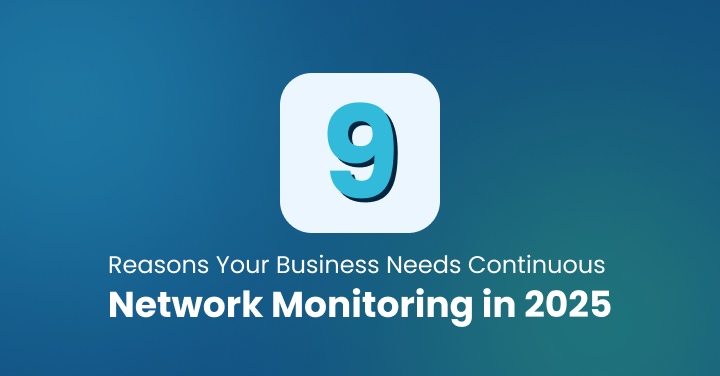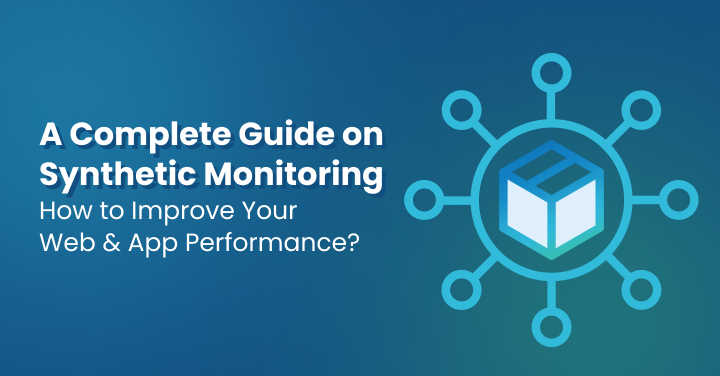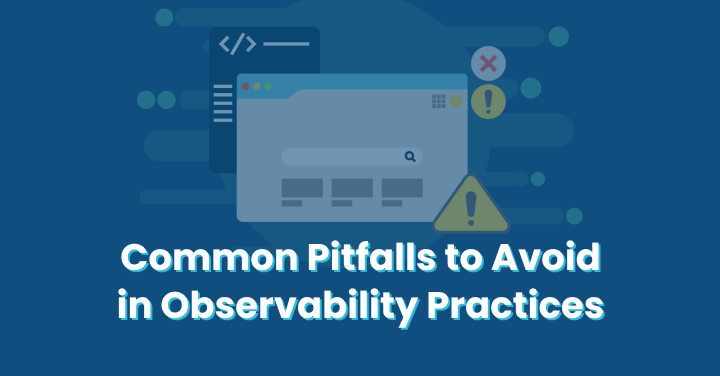Service Level Agreements (SLAs) are the foundation of trust between service providers and customers. They set clear expectations for performance, reliability, and responsiveness. But living up to these commitments isn’t always easy networks are complex, and even small issues can lead to missed targets, downtime, or dissatisfied users. That’s where continuous network monitoring comes in.
By keeping a constant eye on network performance, teams gain real-time visibility into what’s happening across systems, applications, and devices. Instead of waiting for a customer complaint or a major outage, IT teams can spot early signs of trouble, such as rising latency or packet loss—and act before service is disrupted.
For providers, this means fewer penalties and stronger customer relationships. For businesses, it ensures smoother operations and less downtime. Continuous monitoring turns SLA compliance from a reactive challenge into a proactive strategy for reliability and trust.
What Is SLA (Service Level Agreement) Compliance?
SLA compliance means meeting the performance and quality standards set in a Service Level Agreement (SLA). An SLA is a contract between a service provider and a customer that defines the level of service expected. It acts as a measurable benchmark for providers and gives customers assurance about service quality.
For providers, SLA compliance is more than a legal requirement—it reflects efficiency and reliability. Failing to comply can result in financial penalties, service credits, or reputational damage. For customers, SLA compliance guarantees consistent service, reduces disruptions, and ensures business continuity.
Continuous network monitoring plays a critical role here. It provides the data to prove compliance and helps prevent issues before they lead to violations. Instead of reacting after a failure, monitoring enables early detection and intervention.
Understanding SLA Compliance
SLA compliance is all about meeting the standards that define how reliable and responsive a service should be. These standards are not vague promises—they are measurable factors that can be tracked, reported, and verified. By monitoring the right metrics, organizations can prove they are delivering the quality-of-service customers expect and quickly act when performance starts to slip.
Key SLA Metrics
- Uptime/Availability: This is the most familiar SLA metric and often the one customers care about most. It reflects the percentage of time a service is accessible and functioning. For instance, a “99.9% uptime” commitment allows for less than 9 hours of downtime per year. Even small dips below this can impact customer trust, especially for services that must always be online, such as banking apps or e-commerce platforms.
- Latency: Latency measures how long it takes for data to travel from point A to point B. In simple terms, it’s the “delay” users feel. Low latency is vital for real-time applications like video conferencing, online gaming, or VoIP calls, where even a slight delay can disrupt conversations or gameplay.
- Packet Loss: Packet loss occurs when data packets don’t reach their destination. Even a small percentage of lost packets can cause noticeable issues like poor video quality, broken audio, or delayed file transfers—frustrating both end-users and IT teams.
- Response Time: Response time shows how fast a system reacts to user requests, such as loading a webpage or retrieving API data. Slow responses hurt user experience and, over time, can erode confidence in the service.
Consequences of SLA Violations
- Financial Penalties: Refunds or credits for downtime or missed targets.
- Reputational Damage: A record of breaches can reduce customer trust and affect future business.
- Legal Action: Severe or repeated failures can result in disputes and legal claims.
SLA compliance applies in both external contracts and internal IT agreements. For example, an IT team may commit to keeping a CRM system available 99.9% of the time for business users.
What Is Continuous Network Monitoring?
Continuous network monitoring is the practice of observing network health and performance around the clock. Instead of relying on periodic checks, it provides a constant, real-time view of what’s happening across the entire infrastructure. This helps teams spot problems quickly, maintain service quality, and ensure SLA compliance.
- Definition and Scope: Monitoring involves collecting data from critical devices such as routers, switches, servers, and firewalls, 24/7. It tracks factors like bandwidth use, error rates, and system performance. Importantly, it’s not limited to on-premises equipment—modern monitoring also covers cloud services, SaaS applications, and even remote employee endpoints. This wide scope ensures visibility across every part of the network that could affect service delivery.
- Real-Time vs. Scheduled Monitoring: Real-time monitoring provides instant updates, allowing IT teams to respond immediately to issues like rising latency or packet loss. Scheduled monitoring, on the other hand, captures performance data at set intervals, which is valuable for generating reports and identifying long-term trends. Together, they give both immediate insights and historical context.
- Tools and Technologies: Several tools and protocols make continuous monitoring possible. SNMP collects device data, while NetFlow/sFlow analyzes traffic flows for capacity planning and security. Packet sniffers like Wireshark help troubleshoot detailed traffic issues, and basic utilities like ping and traceroute remain essential for connectivity testing.
By combining these methods, organizations gain a complete picture of their network, making it easier to prevent downtime, resolve issues quickly, and deliver reliable service.
How Continuous Monitoring Supports SLA Compliance
Continuous network monitoring is more than a technical process—it’s a way to make sure organizations consistently meet SLA commitments. By giving teams visibility into performance and providing actionable insights, monitoring helps prevent issues before they become serious problems.
- Real-Time Visibility: One of the biggest advantages is real-time visibility. Instead of waiting for a customer to report a slow application or dropped call, monitoring tools detect changes instantly. For example, if latency to a key database starts creeping up, the system flags it immediately. This early warning allows IT teams to act before users are impacted or an SLA threshold is crossed.
- Proactive Issue Resolution: Continuous monitoring enables teams to be proactive rather than reactive. Detailed alerts highlight where the problem lies—whether it’s a faulty router, high CPU usage, or bandwidth congestion. With this information, teams can resolve root causes quickly, reducing downtime and preventing recurring issues that could otherwise lead to repeated SLA violations.
- Accurate Reporting and Documentation: Compliance isn’t just about fixing problems—it’s also about proving performance. Monitoring platforms automatically log data and generate reports that show uptime, response times, and other SLA metrics. These records provide evidence during reviews or disputes and give customers confidence in the service.
- Trend Analysis and Capacity Planning: Over time, monitoring data reveals patterns in network use. For instance, bandwidth might peak every afternoon, suggesting future demand will grow. By using these insights, organizations can plan upgrades in advance, ensuring they continue to meet SLA targets even as workloads increase.
Steps to Implement Continuous Network Monitoring for SLA Compliance
Setting up continuous monitoring requires more than just installing tools—it needs a structured approach that ties directly to your SLA goals.
Step 1: Define SLA Parameters and Thresholds
Start by reviewing your SLAs in detail. Identify the exact metrics that matter, such as uptime, latency, or response time. Be precise with thresholds—for example, keeping API response time under 150ms. Clear targets help you know exactly what to measure and when performance slips.
Step 2: Choose Appropriate Monitoring Tools and Platforms
The right tool depends on your organization’s size and complexity. Open-source options like Nagios or Zabbix are great for flexibility, while commercial platforms such as SolarWinds, PRTG, or LogicMonitor offer scalability and support. Focus on solutions that integrate well with your existing infrastructure.
Step 3: Set Up Alerts and Escalation Workflows
Alerts are the heart of monitoring, but they must be actionable. Configure them around SLA thresholds and establish escalation paths. For instance, if packet loss exceeds 5% and isn’t resolved within minutes, the alert should move up to senior engineers.
Step 4: Automate Reporting and Dashboarding
Manual reports waste time. Automating reports and creating visual dashboards keeps stakeholders informed at a glance. Real-time dashboards also help teams spot issues faster.
Step 5: Review and Optimize Based on Historical Data
Monitoring is not static. Use historical data to fine-tune thresholds, avoid false alerts, and adapt to new applications or usage patterns. Regular reviews ensure your system stays relevant as business and technology evolve.
Best Practices for SLA-Driven Network Monitoring
Getting the most out of network monitoring requires a thoughtful approach that goes beyond just tracking metrics.
1. Monitor both internal and external services:
It’s not enough to only watch over your internal network. Today’s businesses rely heavily on cloud platforms, SaaS applications, and third-party APIs. Keeping an eye on these external dependencies ensures you see the full picture of the user experience.
2. Use synthetic monitoring:
By simulating user activity, synthetic tests reveal how applications perform in real-world scenarios. Running these checks from different locations helps you detect issues before customers encounter them.
3. Focus on critical SLAs:
Not every system carries the same weight. Prioritize monitoring for services directly tied to revenue, customer satisfaction, or business operations.
4. Audit SLA metrics regularly:
Business needs evolve, and so do service expectations. Periodic audits and adjustments to monitoring thresholds keep your strategy aligned with current goals and agreements.
Challenges and How to Overcome Them
Even with its benefits, continuous network monitoring comes with challenges that must be managed carefully.
1. False Positives and Alert Fatigue:
Poorly configured alerts can overwhelm teams with unnecessary notifications. This leads to “alert fatigue,” where real issues may get ignored. To address this, fine-tune thresholds, group related alerts, and set dependencies so that one failure doesn’t trigger multiple warnings.
2. Monitoring Blind Spots:
In hybrid and multi-cloud environments, gaps in visibility are common. Some services may not provide enough data for monitoring. The solution is to use monitoring platforms that integrate seamlessly across on-premises and cloud systems, ensuring a unified view of the entire network.
3. Data Overload:
Continuous monitoring generates massive amounts of raw data, which can be overwhelming. To overcome this, choose tools with built-in analytics and machine learning. These help filter noise, highlight critical issues, and turn complex datasets into actionable insights.
Conclusion
SLA compliance reflects a provider’s reliability and commitment to customers. Continuous network monitoring is key to achieving and maintaining that compliance.
By offering real-time visibility, supporting proactive issue resolution, enabling accurate reporting, and improving capacity planning, monitoring helps organizations stay ahead of problems. It reduces penalties and protects reputation while building trust and long-term success.
FAQs:
It means meeting agreed service standards such as uptime, latency, and availability.
It provides real-time visibility and allows early detection and resolution of issues.
It reduces the likelihood of breaches by enabling proactive management.
They should be monitored continuously and reviewed weekly or monthly.






